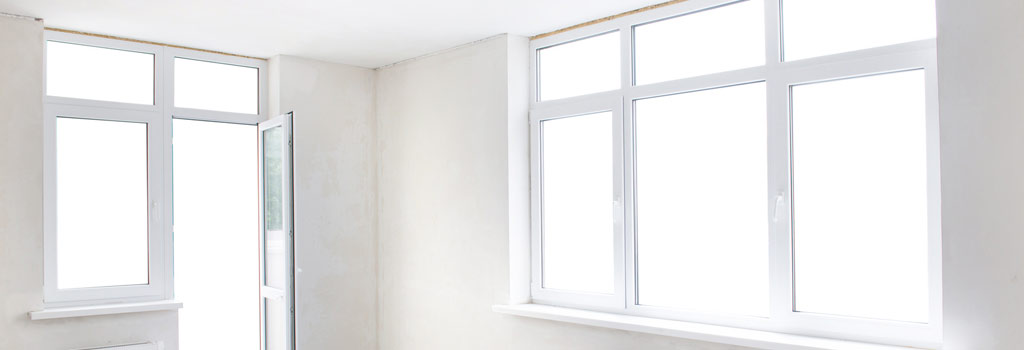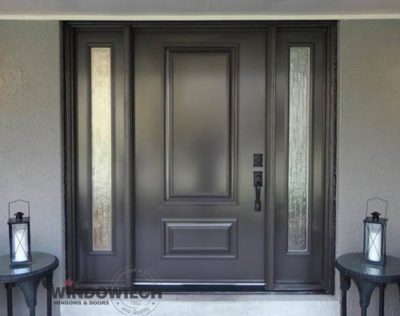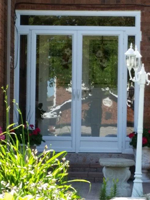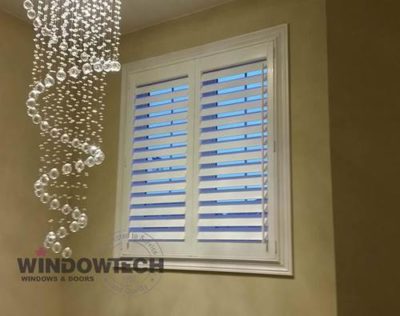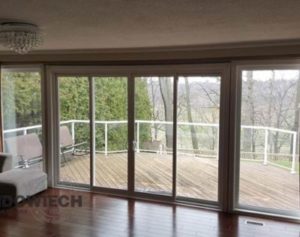Black mold on windows is not only aesthetically displeasing, but it can also be a serious issue for you and your loved ones. When left unchecked, black mold can damage your property and trigger serious health issues, particularly if anyone in your household has allergies or respiratory issues. This can be especially problematic for the elderly, children and those with pre-existing health conditions.
In this article, we’ll explore window mold in more detail and how you can get rid of it in your home.
Why Does Mold Appear on Windows
A big question about mold is “Why does mold appear on windows?” The simple answer is that mold needs moist conditions and poor ventilation to thrive, which is why it tends to appear on and around windows and doors. If the seals around the windows have been compromised or there is condensation build-up, it provides the optimum conditions for mold. Unfortunately, mold is not limited to the window frame, as it can spread to the surrounding walls and even your window sill.
If you’re in need of windows replacement and the seals have already suffered excessive wear, it is likely that the damp conditions have already begun that can trigger black mold. While it is more common with wooden windows, you can experience black mold issues with other materials, including vinyl windows.
How to Prevent Mold Growth
Dealing with black mold around windows can be a pain, so it is far better to prevent the issues from developing in the first place. Fortunately there are some simple methods for how to prevent mold growth, particularly window mold. Since one of the leading causes of mold is moisture, the key to prevention is controlling the humidity levels inside your home and ensuring there is proper ventilation. – Anton Masarsky
Humidity is the main reason why you’ll get black mold on windows, and by reducing the humidity levels, you can significantly reduce the risk of black mold at home.
- Assess Your Ventilation: To ensure proper ventilation, you should ensure that your bathrooms, kitchen and laundry rooms are well-ventilated. If you don’t already have them, install exhaust fans and make sure that you run them for a minimum of 20 minutes after you take a hot shower, which will allow the moisture to leave the home.
- Run Dehumidifiers: If you have an area in your home with higher humidity levels, such as a basement, this is a likely candidate for black mold in window frames and sills. Dehumidifiers are a great way to remove excess moisture and maintain the optimum humidity level. Dehumidifiers reduce excess moisture, which can help you avoid mold on window frames.
- Check Your Caulking and Window Seals: A common underlying cause of black mold around windows is water leakage. This happens when the seals around windows fail, which allows moisture to seep into the frame, encouraging condensation. Over time, this moisture will create the ideal conditions for mold to grow. Regularly inspect your caulking and window seals, replacing any worn or damaged sections to maintain a watertight seal.
Effective Ways to Remove Mold
If you’ve not been able to prevent it, you need to know how to get rid of mold on windows, and fortunately, there are some effective home remedies that can be helpful for minor cases of window mold.
You will need a mask and rubber gloves to clean any mold safely, as you want to avoid breathing in or exposing your skin to mold spores. There are a number of cleaning solutions that you can use, including:
- White vinegar
- Bleach and water
- Ammonia
However, you need to be careful not to mix different types of cleaners. Bleach and ammonia, in particular, can be highly dangerous, as it produces a toxic gas when combined.
Apply your preferred cleaning solution to the affected areas of black mold in window frames, sills and the surrounding walls. Gently scrub with a brush, but take care if the affected area could be damaged. Rinse with clean water and ensure it is thoroughly dried.
After you finish cleaning, you can apply a mold-resistant sealing product, but you also need to address the underlying cause.
You may also find professional products and solutions that can be used to clean black mold on windows, but you need to use these items carefully. Follow the instructions for the specific product and always use the appropriate protective equipment, such as gloves and goggles.
Do You Need to Replace Your Windows?
Old frames, poorly installed windows, and leaky seals allow moisture seepage, which means that even the best cleaning will only provide a temporary solution. New window units will be watertight and if properly installed, should eliminate the moisture issues that caused the mold.
Black mold is prone to recurrence, particularly if you are unable to effectively address the underlying cause. In severe cases, you may need to replace the window and frame. While this is an additional expense, new windows can prevent further mold issues.
If you are interested in a long-term solution to your black mold issues, it is best to replace the window entirely. Window replacement will not only look more appealing, but it will solve the moisture build-up problem, providing seals that won’t allow moisture in. This will prevent mold recurrence and improve the overall comfort of your home.
Conclusion
If you start to notice black spots around your windows, it is likely that you already have a black mold issue, so you’ll need to act fast. Black mold can be incredibly invasive, spreading in the moist conditions around windows, producing spores that can trigger respiratory issues, particularly for those with existing conditions such as asthma or allergies.
It is possible to clean up minor mold, but you also need to address the underlying issue or the mold will reoccur. In more severe cases, you will need to replace the window, so it is far better to take a preventive mindset and be aware of the condition of your window seals and moisture levels inside your home, to prevent black mold from taking hold.


